套管式换热器PPT
- 格式:ppt
- 大小:314.00 KB
- 文档页数:10
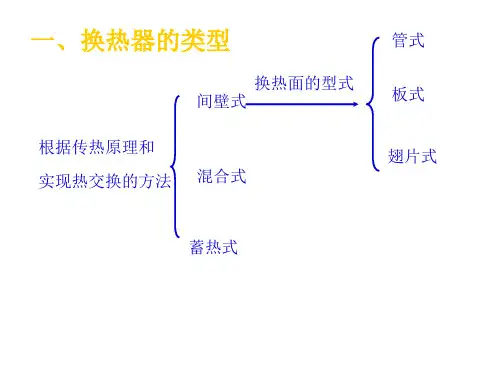
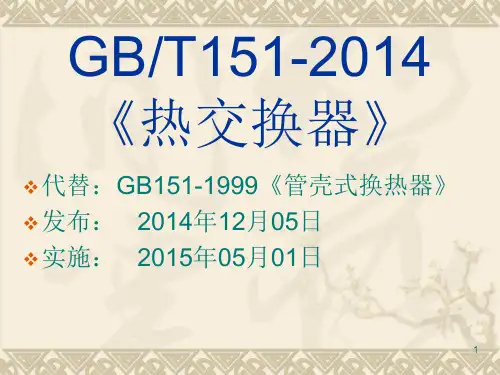
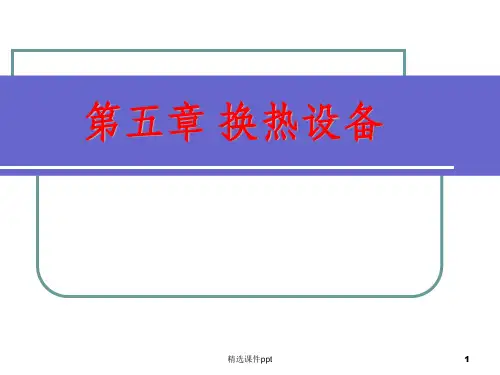

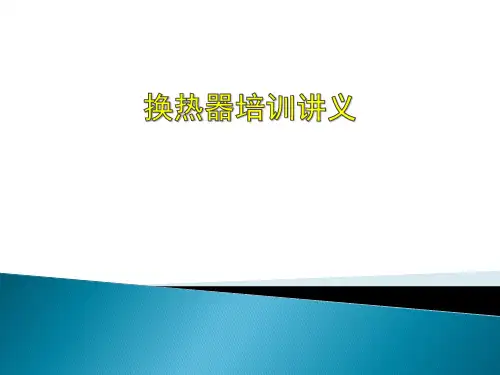
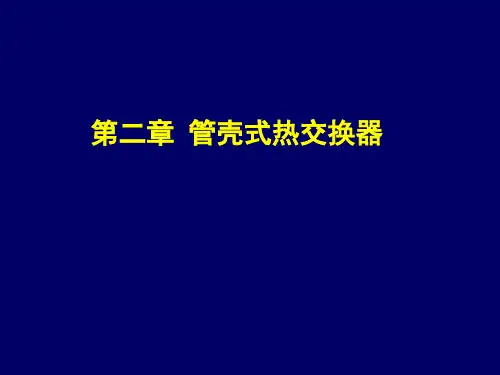
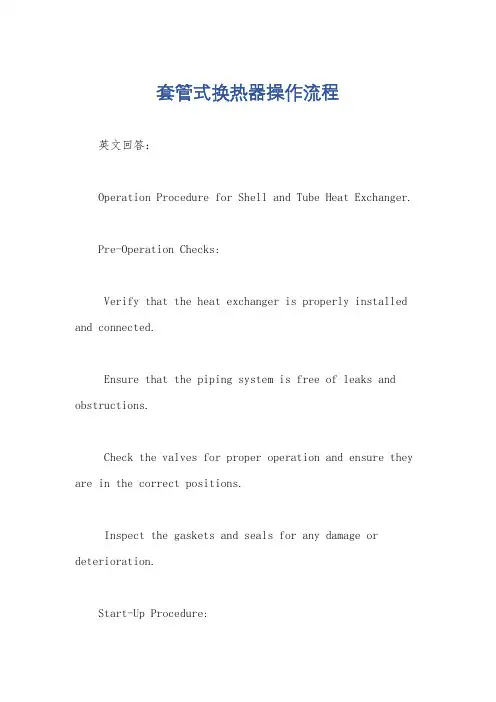
套管式换热器操作流程英文回答:Operation Procedure for Shell and Tube Heat Exchanger.Pre-Operation Checks:Verify that the heat exchanger is properly installed and connected.Ensure that the piping system is free of leaks and obstructions.Check the valves for proper operation and ensure they are in the correct positions.Inspect the gaskets and seals for any damage or deterioration.Start-Up Procedure:Slowly open the inlet valve to the shell side of the heat exchanger.Allow the shell side to fill with fluid and vent any trapped air through the vent valve.Close the vent valve once the shell side is full.Gradually open the inlet valve to the tube side of the heat exchanger.Allow the tube side to fill with fluid and vent any trapped air through the vent valve.Close the vent valve once the tube side is full.Operation Monitoring:Monitor the inlet and outlet temperatures of both fluids.Ensure that the flow rates are within the specified range.Check the pressure drop across the heat exchanger to detect any fouling or blockages.Monitor the vibration levels to ensure that the heat exchanger is operating smoothly.Shutdown Procedure:Gradually reduce the flow rate of the shell side fluid by closing the outlet valve.Once the shell side flow rate is low, close the inlet valve completely.Gradually reduce the flow rate of the tube side fluid by closing the outlet valve.Once the tube side flow rate is low, close the inlet valve completely.Open the vent valve to release any residual pressurein the heat exchanger.Cleaning and Maintenance:Regularly clean the heat exchanger to remove any fouling or deposits.Inspect the gaskets and seals periodically for any damage or deterioration.If necessary, disassemble the heat exchanger for a thorough cleaning and inspection.Troubleshooting:If the heat exchanger is not performing as expected, refer to the manufacturer's troubleshooting guide.Common problems include fouling, blockages, and leaks.Address any issues promptly to ensure the efficient operation of the heat exchanger.中文回答:套管式换热器操作流程。
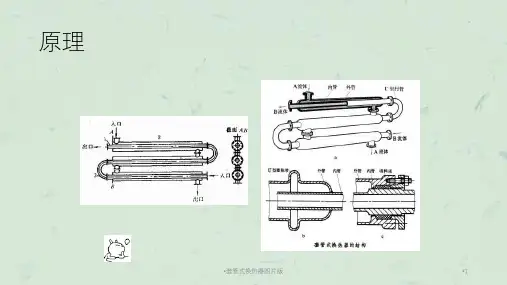
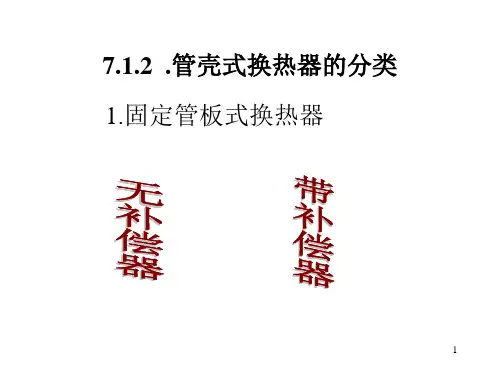

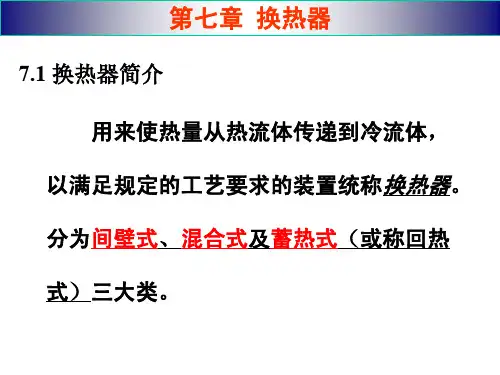
1.结构原理套管式换热器以同心套管中的内管作为传热元件的换热器。
两种不同直径的管子套在一起组成同心套管,每一段套管称为"一程",程的内管(传热管)借U形肘管,而外管用短管依次连接成排,固定于支架上(图中a)。
热量通过内管管壁由一种流体传递给另一种流体。
通常,热流体(A流体)由上部引入,而冷流体(B流体)则由下部引入。
套管中外管的两端与内管用焊接或法兰连接。
内管与U形肘管多用法兰连接,便于传热管的清洗和增减。
每程传热管的有效长度取4~7米。
这种换热器传热面积最高达18平方米,故适用于小容量换热。
当内外管壁温差较大时,可在外管设置U形膨胀节(图中b)或内外管间采用填料函滑动密封(图中c),以减小温差应力。
管子可用钢、铸铁、铜、钛、陶瓷、玻璃等制成,若选材得当,它可用于腐蚀性介质的换热。
2.优点这种换热器具有若干突出的优点,所以至今仍被广泛用于石油化工等工业部门。
①结构简单,传热面积增减自如。
因为它由标准构件组合而成,安装时无需另外加工。
②传热效能高。
它是一种纯逆流型换热器,同时还可以选取合适的截面尺寸,以提高流体速度,增大两侧流体的传热系数,因此它的传热效果好。
液-液换热时,传热系数为870~1750W/(m·℃)。
这一点特别适合于高压、小流量、低传热系数流体的换热。
套管式换热器的缺点是占地面积大;单位传热面积金属耗量多,约为管壳式换热器的5倍;管接头多,易泄漏;流阻大。
③结构简单,工作适应范围大,传热面积增减方便,两侧流体均可提高流速,使传热面的两侧都可以有较高的传热系数,是单位传热面的金属消耗量大,为增大传热面积、提高传热效果,可在内管外壁加设各种形式的翅片,并在内管中加设刮膜扰动装置,以适应高粘度流体的换热。
④可以根据安装位置任意改变形态,利于安装。
3.缺点①检修、清洗和拆卸都较麻烦,在可拆连接处容易造成泄漏。
②生产中,有较多材料选择受限,由于套管式换热器大多是内管中不允许有焊接,因为焊接会造成受热膨胀开裂,而套管式换热器大多数为了节省空间选择,弯制,盘制成蛇管形态,故有较多特殊的耐腐蚀材料无法正常生产。